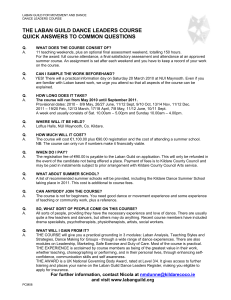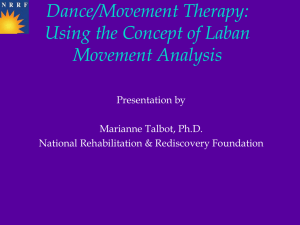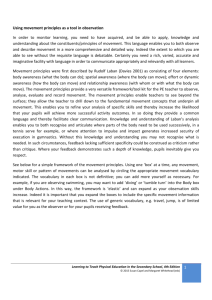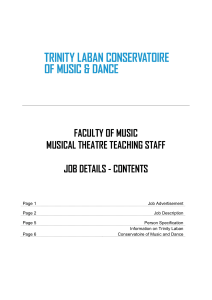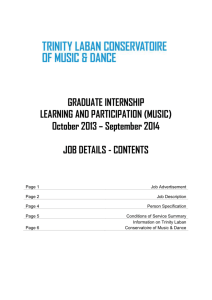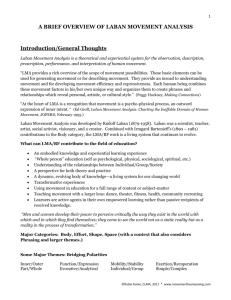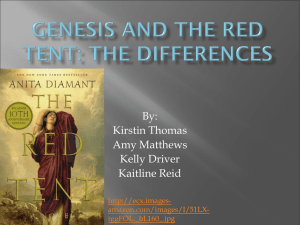Literacy and Dance
advertisement
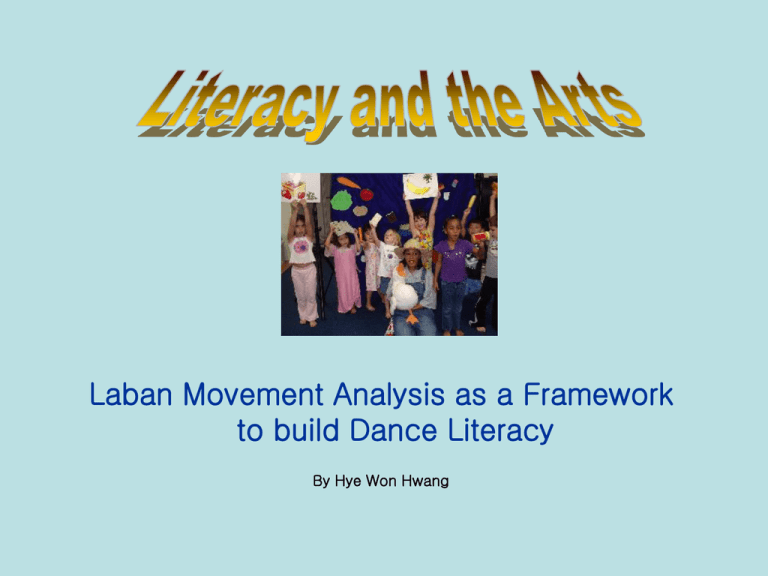
Laban Movement Analysis as a Framework to build Dance Literacy By Hye Won Hwang Rudolf Laban (1879 -1953) was born in Austro-Hungary. Laban was a dancer, a choreographer and a dance / movement theoretician. “Without literacy dance would never be taken seriously by the cultural elite.” (Laban, Rudolf) Rudolf Laban's passion was to establish dance as an art of equal standing to its sister arts, a place it had never held. It had to establish a medium through its own literacy, hence in his burning desire to find a notation for dance. • Laban Movement Analysis (LMA) is a system and language for understanding, observing, describing and notating all forms of movement. • Devised by Rudolf Laban, LMA draws on his theories of Effort and Shape to describe, interpret and document human movement. • LMA was developed after Laban's death by his students. LMA has four main categories: Body, Effort, Shape, Space. The body category describes structural and physical characteristics of the human body while moving. Effort, or what Laban sometimes described as dynamics, is a system for understanding the more subtle characteristics about the way a movement is done with respect to inner intention. Shape Flow of Growing Shrinking Arc-like Directional Spoke-like Directional Shaping It is ill suited to discussing the way the body changes shape during movement. This category involves motion in connection with the environment, and with spatial patterns, pathways, and lines of spatial tension. • Motif Description: Depicts the most important elements, the essential aspects of the movement sequence. • Labanotation: Detailed description of movement so it may be reproduced exactly as it was performed or conceived. Laban Movement Analysis is a movement framework that can help not only teachers to strengthen their teaching skills but also students to build up dance literacy in the process of making, performing and appreciating.
